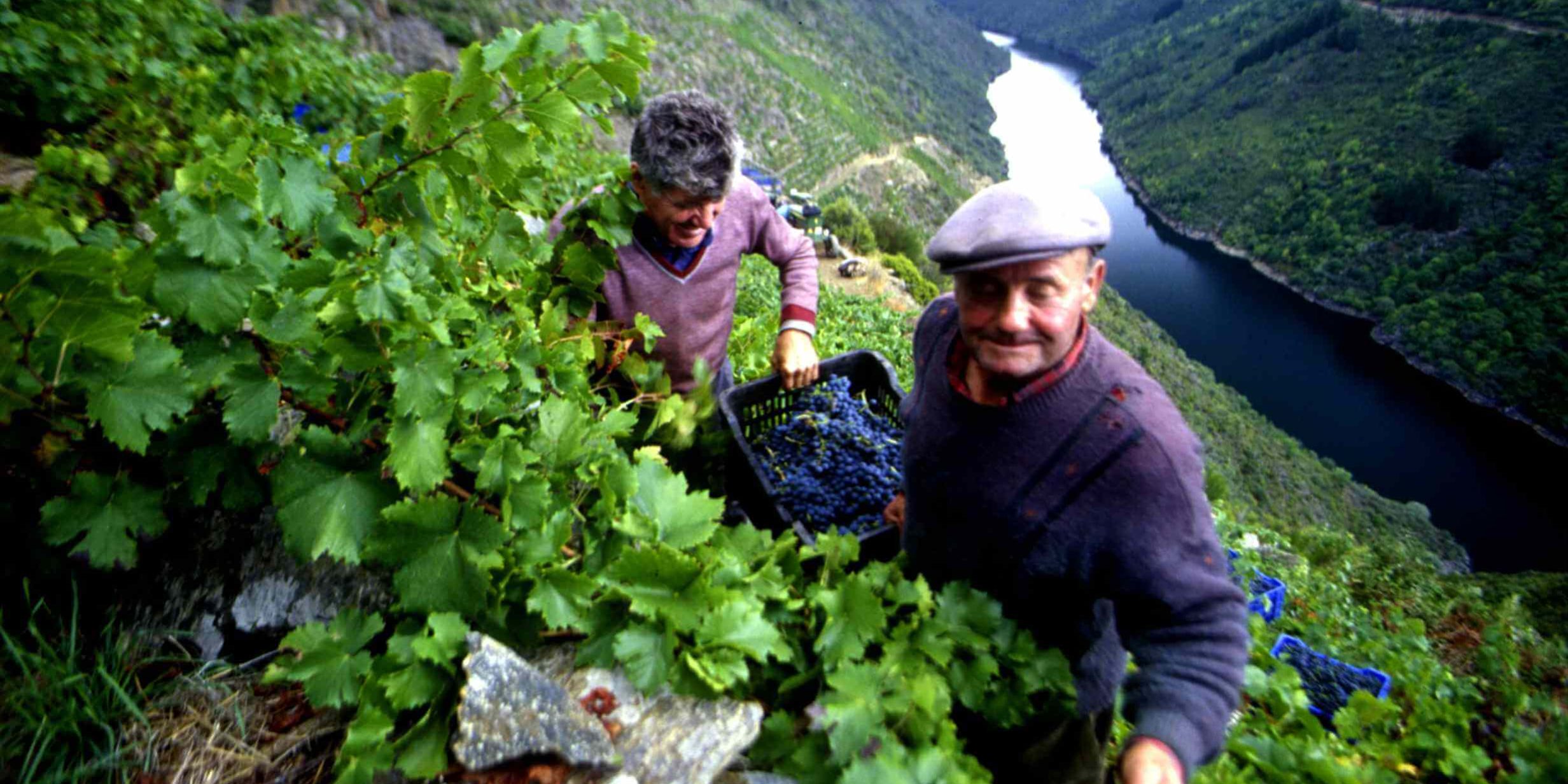by Andrew Lohse, Certified Sommelier, CMS
Oppressive heat. Arid wind. Rocky soil. Vertiginous grades, heavy rain, and roaring rivers. Lava. Lava! No one said viticulture was easy—but does it have to be this hard? In Spain’s multitudinous, often capricious wine regions, the answer, especially when it comes to terroir-transparent winemaking, is a resounding yes. From active volcanoes to soggy seaside vineyards, Spain’s range of extreme terroirs is paralleled only by its array of perfectly adapted autochthonous varietals. If wine tells the story of the land, Spain’s narrative is a dramatic one… to say the least.
While most wine-producing countries boast only a handful of regions with such challenging conditions, in Spain, home to more vineyard acreage than any other country on earth, the inverse seems to be true. Looking for easy-to-farm, flat vineyards with mild weather? Try Australia. But while obdurate, treacherous terrain may make life hard for vines (and growers), the translation of this climactic diversity into the country’s wines is a gift for oenophiles bored of the same old ordinary bottlings.
The second most mountainous country in Europe eclipsed only by Switzerland, Spain is no stranger to elevation gain, steep gradation of vineyard sites and dizzying diurnal shifts. With an average vineyard altitude of 2,000 feet, it’s no surprise that Spain produces wines of serious acidic freshness, intensity, and depth. Add in baking heat in regions like Priorat—known for its powerful, rich Garnacha-based blends—and you have all the ingredients for incredibly dynamic winemaking.
On Spain’s Canary Islands, heat and altitude meet another hazard: lava. Only 80 miles off the African coast and notable for a landscape shaped by massive volcanic eruptions, the island of Lanzarote is famed for its picon, a black volcanic soil that helps retain much-needed moisture— and is even able to be pulled from the air. The wind here can be destructive, so bush vines are planted into man-made depressions protected by handmade rock walls. The neighboring Canary Island of Tenerife is also home to Spain’s highest elevation, the volcano El Teide, and some of the country’s highest elevation vineyards.
If heat and high places drive you crazy, coastal areas like Getariako Txakolina and Rías Baixas in Basque Country and Galicia, respectively promise their unique vineyard difficulties. Heavy rainfall, strong winds, mildew and mold, and poor, stony soils require often heroic efforts from growers to manage yields, ripeness and disease pressure. Trellising is a must, with Rías Baixas in particular known for its parrales vine training system in which granite posts connected with wires lift grapevines from ground moisture, protecting them from humidity while also allowing otherwise problematic winds to become a positive, drying force.
In a widely planted, wine-crazy nation with such mercurial extremes, there is always something new to taste, study and discover. As American interest in Spanish wines reaches new heights, and as a rising investment and economic demand for otherwise obscure or overlooked varietals makes farming in difficult areas more rewarding, it’s important to watch for more fruits of heroic harvests. This is because once your wine is considered a unicorn bottle, it’s worth taking your chances with all that lava, right?







